Accelerate > Publications
Search this online library featuring the latest FAO publications, issue papers and briefs which offer up-to-date knowledge and innovative insights for SDG acceleration.
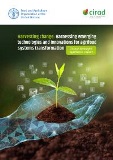
Harvesting change: Harnessing emerging technologies and innovations for agrifood system transformation - Global foresight synthesis report
2023
This study assesses a selection of technologies and innovations, which potentially could be of paramount importance in addressing agrifood challenges until 2050, as well as the most important trends and drivers that will influence the emergence of agrifood technologies and innovations and their triggers of change, including some regional aspects.

FAO and the 2030 Agenda Follow-up and Review: Guidance Note for Regional and Country Offices
2023
The Guidance Note describes the process of the preparation of the VNRs and what FAO Regional and Country Offices need to be aware and mindful of when providing support to the national partners. It covers information about the importance of the follow-up and review process for the 2030 Agenda and the SDGs, including information about the gaps in the coverage of the Voluntary National Reviews, and recommendations on strengthening VNRs to be meaningful instruments for the acceleration of the SDGs.

The State of Food and Agriculture 2023 - Revealing the true cost of food to transform agrifood systems
2023
The State of Food and Agriculture 2023 looks into the true cost of food for sustainable agrifood systems. The report introduces the concept of hidden environmental, health and social costs and benefits of agrifood systems and proposes an approach – true cost accounting (TCA) – to assess them.

FAO SDG Action: Marking the mid-way point of the 2030 Agenda
2023
As we stand at the midpoint of the 2030 Agenda, it is both a moment of reflection and an opportunity to renew our commitment to achieving the SDGs. In August 2023, the FAO Office of SDGs launched a survey, receiving over 600 responses that shared valuable insights, experiences and actions taken by FAO offices towards the achievement of the SDGs. In addition this survey, FAO project data was leveraged to present this visual representation of FAO’s contribution to the 2030 Agenda implementation.

2023 SDG Summit: FAO Key Messages
2023
The 2023 SDG Summit will serve as a pivotal event towards achieving the SDGs, as gathered Heads of State and Government are to carry out a comprehensive review of progress, respond to the impact of multiple crises, and provide high-level political guidance on transformative and accelerated actions for achieving the 2030 Agenda. FAO has developed these key messages to inform the discussions in the lead up to and during this Summit and the Political Declaration which will result from them.

Transforming public agricultural extension and advisory service systems in smallholder farming - Status quo, gaps, way forward
2022
Worldwide, extension and advisory service (EAS) systems have undergone reforms since the 1990s. However, the reforms of the last two decades in many countries have largely failed, as there has not been significant increase in accountability, efficiency, empowerment or impact. To fill this gap, this document, based on a systematic and extended literature review, delves into public EAS systems in developing countries, with a special focus on smallholder farming and institutional reforms.
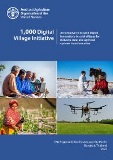
1,000 Digital Village Initiative - An initiative to expand digital innovations in rural villages for inclusive rural and agrifood systems transformation
2022
This report introduces the FAO Digital Village Initiative, which aims to facilitate through knowledge and information. It approaches countries and communities to develop, accelerate and deploy digital technologies in rural villages and communities. The report introduces the Digital Village Ecosystem approach. It describes an instrument (tool) to gather information and provide a village ecosystem assessment to help generate recommendations for future interventions to deploy beneficial, ...
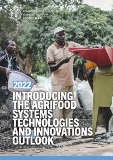
Introducing the Agrifood Systems Technologies and Innovations Outlook
2022
Agrifood system transformation to achieve the Sustainable Development Goals requires increased attention to developing, adapting and diffusing impactful science, technology and innovation (STI). Current levels and patterns of STI uptake are inadequate to facilitate needed agrifood system transformations, especially in today's low- and middle-income countries

Small-scale producers in sustainable agrifood systems transformation
2022
This paper analyzes the diversity of small-scale producers and demonstrates how understanding small-scale production can have consequences for how policies and investments are directed and how they impact small-scale producer livelihoods. The diverse roles and functions of small-scale production are presented as being essential to realizing sustainable agrifood systems transformations and respecting its social, environmental and economic dimensions.
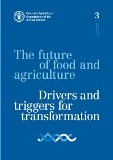
The future of food and agriculture – Drivers and triggers for transformation
2022
This report aims at inspiring strategic thinking and actions to transform agrifood systems towards a sustainable, resilient and inclusive future, by building on both previous reports in the same series as well as on a comprehensive corporate strategic foresight exercise that also nurtured FAO Strategic Framework 2022–31. It analyses major drivers of agrifood systems and explores how their trends could determine alternative futures of agrifood, socioeconomic and environmental systems.

FAO’s work on South–South and Triangular Cooperation in sub-Saharan Africa: Exchanging rice-farming knowledge and technology for food security
2022
FAO has worked with a range of partners on successful South–South and Triangular Cooperation agreements to benefit Africa, including Brazil, China, the Republic of Korea, Morocco, the Bolivarian Republic of Venezuela and Viet Nam. These Global South partners bring considerable knowledge and experience borne from decades of national development progress and international development assistance. Their cooperation embodies solidarity among peoples and countries of the Global South.

The State of Food and Agriculture 2022 - Leveraging agricultural automation for transforming agrifood systems
2022
The State of Food and Agriculture 2022 looks into the drivers of agricultural automation, including the more recent digital technologies. Based on 27 case studies, the report analyses the business case for adoption of digital automation technologies in different agricultural production systems across the world. It identifies several barriers preventing inclusive adoption of these technologies, particularly by small-scale producers.
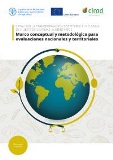
Catalysing the sustainable and inclusive transformation of food systems
2022
Food systems are intimately linked to our lives – through the food we eat, our nutrition and health, our livelihoods, jobs, and the environment and natural resources of the planet. The main challenge for food systems is to produce nutritious food for all while preserving our biodiversity and environment and ensuring equitable distribution of wealth. This brief provides a summarized version of the methodology used to conduct a global assessment of food systems in over 50 countries ...

Status of digital agriculture in 47 sub-Saharan African countries
2022
Sub-Saharan Africa is uniquely positioned significantly increase its current agricultural productivity to lift the region’s more than 400 million people out of extreme poverty and improve the livelihood of approximately 250 million smallholder farmers and pastoralists in the region. To achieve that, substantive digital transformation of the agriculture sector is required through improved infrastructure and increased access to and use of digital technologies for agriculture.

The State of Agricultural Commodity Markets 2020 - Agricultural markets and sustainable development: Global value chains, smallholder farmers and digital innovations
2020
The State of Agricultural Commodity Markets 2020 (SOCO 2020) aims to discuss policies and mechanisms that promote sustainable outcomes – economic, social and environmental – in agricultural and food markets, both global and domestic. The analysis is organized along the trends and challenges that lie at the heart of global discussions on trade and development.
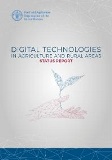
Digital technologies in agriculture and rural areas - Status report
2019
This report aims to identify the different scenarios where the process of digital transformation is taking place in agriculture. This identifies those aspects of basic conditions, such as those of infrastructure and networks, affordability, education and institutional support.
Browse by SDG
- SDG1: No Poverty
- SDG2: Zero Hunger
- SDG3: Good Health & Well-being
- SDG4: Quality Education
- SDG5: Gender Equality
- SDG6: Clean Water & Sanitation
- SDG7: Affordable and Clean Energy
- SDG8: Decent Work and Economic Growth
- SDG9: Industry, Innovation and Infrastructure
- SDG10: Reduced Inequalities
- SDG11: Sustainable Cities and Communities
- SDG12: Responsible Consumption and Production
- SDG13: Climate Action
- SDG14: Life Below Water
- SDG15: Life on Land
- SDG16: Peace, Justice and Strong Institutions
- SDG17: Partnerships for the Goals
Browse by Better
Browse by Priority Area
- Innovation for Sustainable Agriculture Production
- Blue Transformation
- One Health
- Small-Scale Producers' Equitable Access to Resources
- Digital Agriculture
- Healthy Diets for All
- Nutrition for the Most Vulnerable
- Safe Food for Everyone
- Reducing Food Loss and Waste
- Transparent Markets and Trade
- Climate Change Mitigating and Adapted Agrifood Systems
- Bioeconomy for Sustainable Food and Agriculture
- Biodiversity and Ecosystem Services for Food and Agriculture
- Achieving Sustainable Urban Food Systems
- Gender Equality and Rural Women's Empowerment
- Inclusive Rural Transformation
- Agriculture and Food Emergencies
- Resilient Agrifood Systems
- Hand-in-Hand Initiative
- Scaling up Investment
